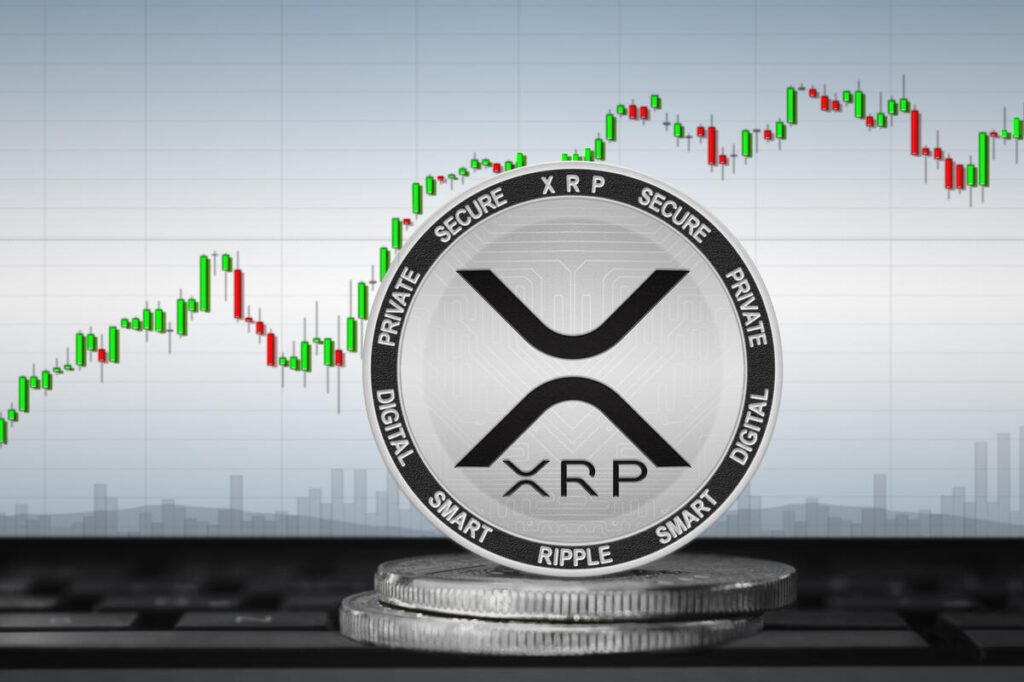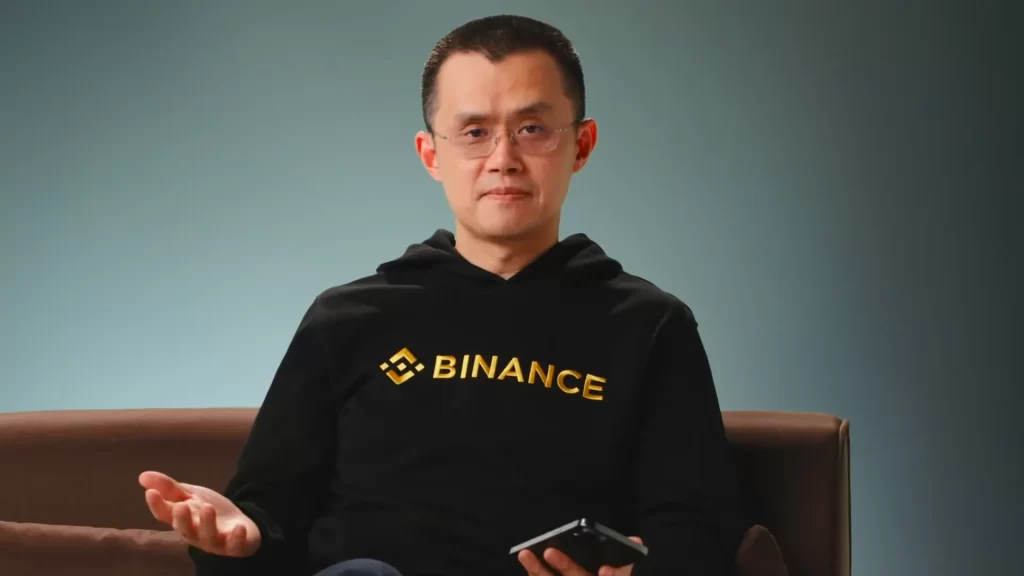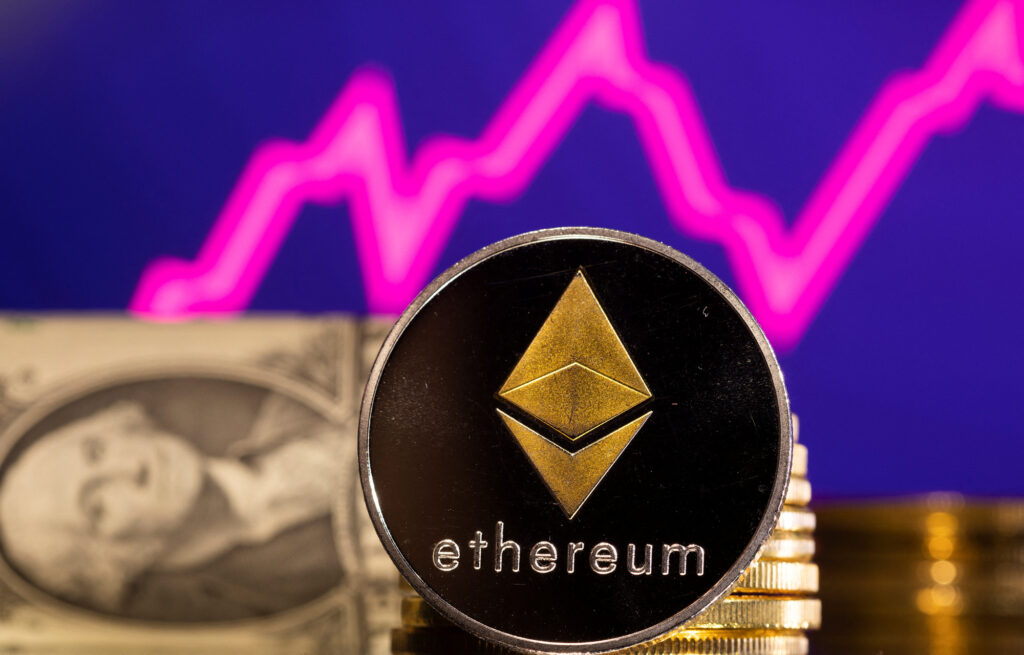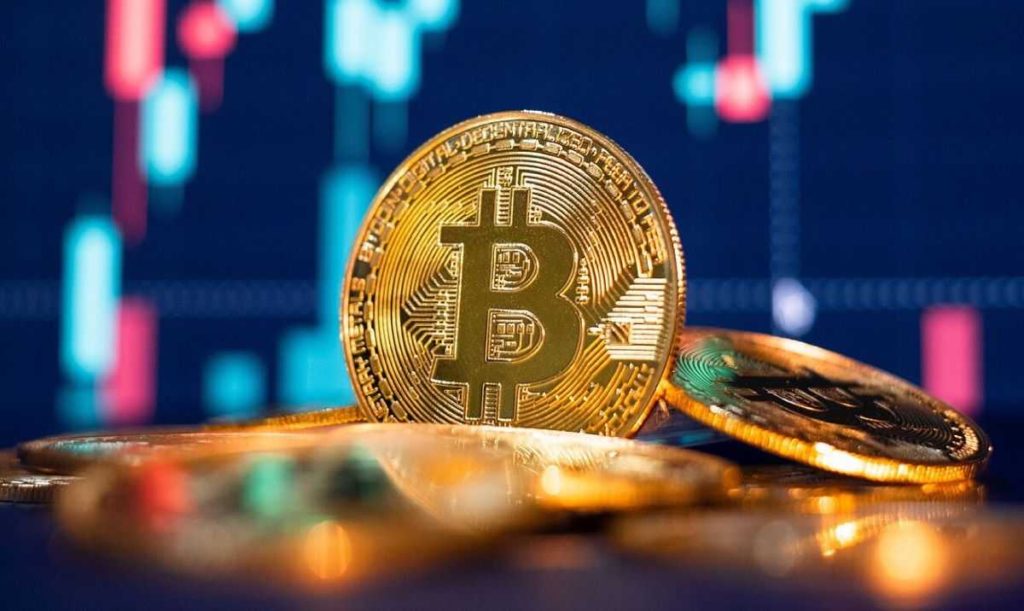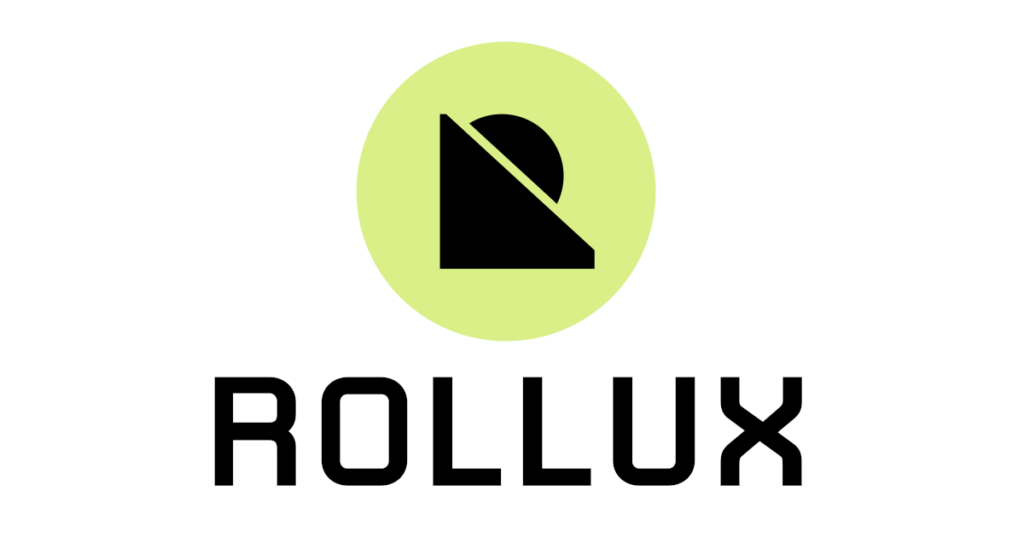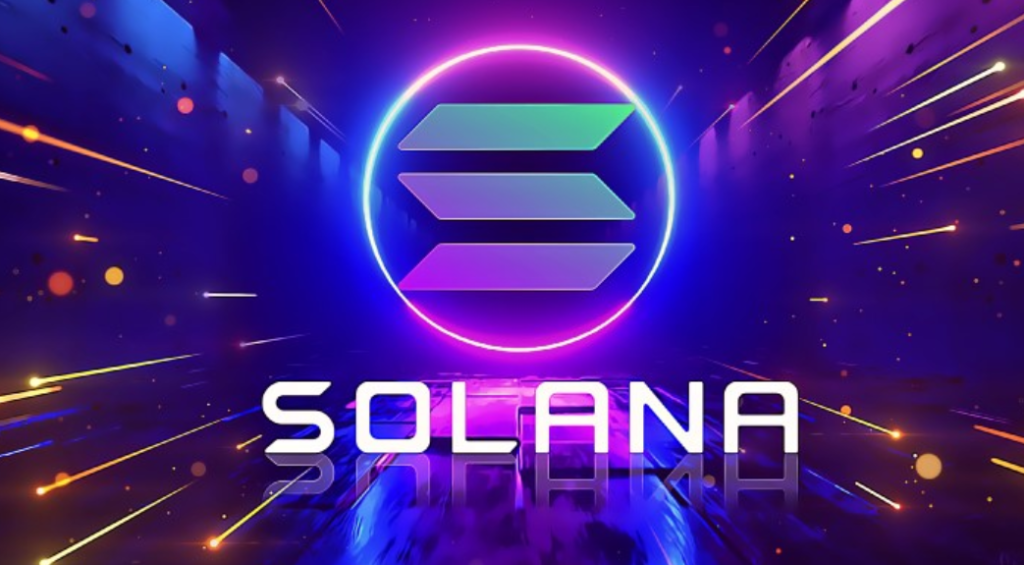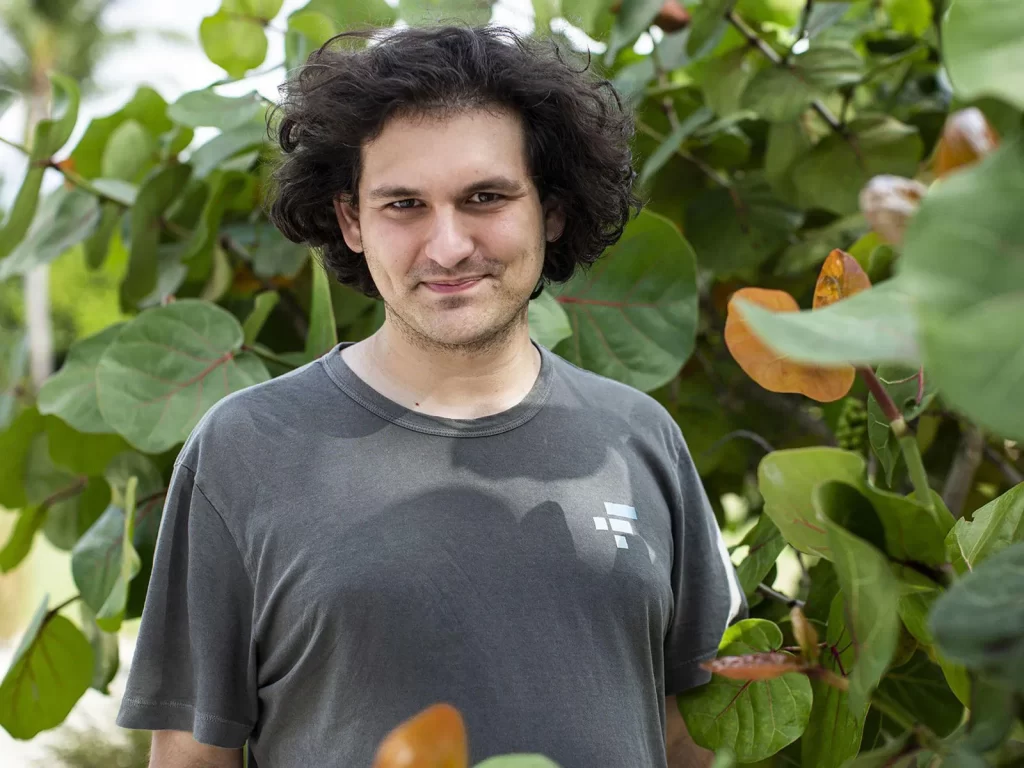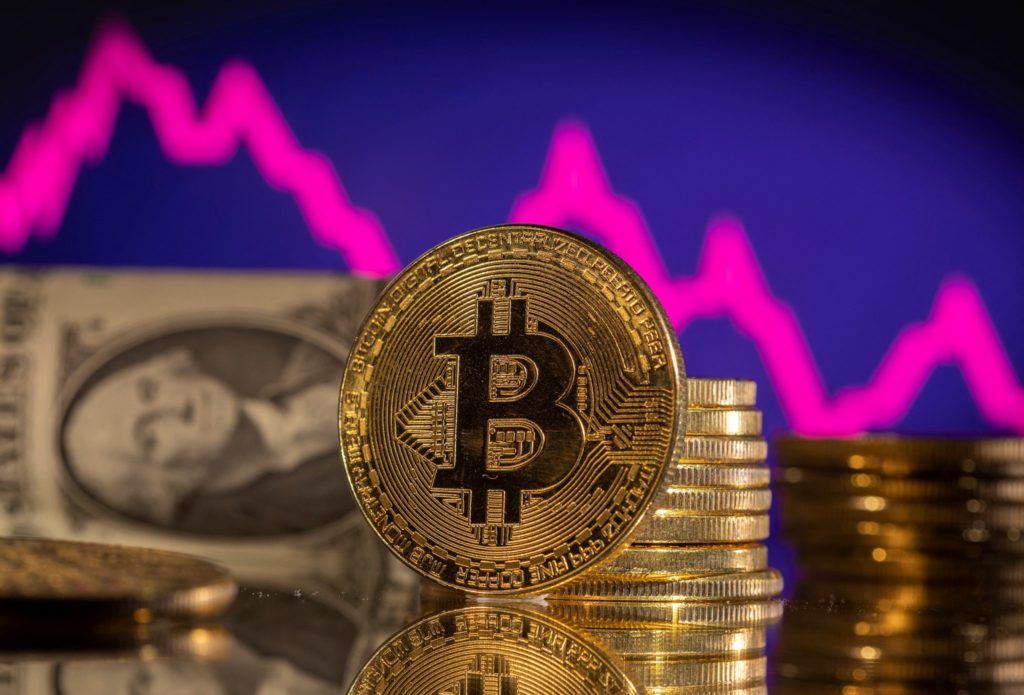On October 16, Ripple, the fintech payments company, posted a new job opening for the position of Senior Manager of Shareholder Communications, which can be based in various locations within and outside the United States.
This announcement has stirred speculation among cryptocurrency enthusiasts, leading many to believe that it could be a subtle indication of Ripple’s intention to go public.
The job posting outlines that the selected candidate will play a crucial role in direct communication with shareholders, a duty typically associated with publicly traded companies.
Their primary responsibility will involve crafting and executing communication and relationship management strategies aimed at both existing and potential investors, as well as financial analysts.
One of the key highlights of the job description is the need to develop strategic plans tailored for significant events such as mergers and acquisitions, investments, liquidity events, and other pivotal moments in the company’s journey.
Additionally, the role involves the creation of investor-centric materials, including presentations, fact sheets, case studies, and analyses.
These materials serve the critical purpose of informing and educating prospective investors about the company’s performance, a necessary step in the preparations for an initial public offering (IPO).
READ MORE:Bitcoin Price Predicted to Soar to $128,000 by 2025
Routine communications, such as quarterly updates, and the maintenance of a comprehensive shareholder database, also fall under the purview of this role.
The job posting has sparked excitement within the XRP community and among Ripple supporters, with many speculating that it may indeed be a hint at an impending IPO.
While some key executives within the company have hinted at the possibility of going public, no specific timing has been disclosed.
Ripple has been in the spotlight recently due to an ongoing lawsuit brought forth by the U.S. Securities and Exchange Commission (SEC) alleging that XRP, the cryptocurrency associated with Ripple, is a security.
However, in a significant victory for Ripple, a judge ruled in July that XRP does not qualify as a security when traded on digital asset exchanges.
Despite the legal challenges in the United States, Ripple has emphasized that the majority of its remittance business operates outside of America, underscoring its global reach and potential for growth.
In conclusion, Ripple’s job posting for a Senior Manager of Shareholder Communications has sparked speculation about the company’s intentions, with many interpreting it as a potential sign of an upcoming IPO.
This development comes amid ongoing legal battles with the SEC, highlighting Ripple’s resilience and determination to thrive in the cryptocurrency industry.
Other Stories:
SYS Labs Unveils Rollux Phase 2
U.S. Government Holds Over 194,000 Bitcoin, Valued at $5.3 Billion
Ethereum Co-Founder Vitalik Buterin Clarifies $15 Million USDC Transaction
Coinbase’s Chief Legal Officer, Paul Singh Grewal, has issued a rallying cry to the cryptocurrency community, urging them to unite against the United States Treasury’s proposed tax reporting regulations on cryptocurrencies.
Grewal argues that these regulations could establish a concerning precedent for extensive surveillance.
Taking to the platform formerly known as Twitter (referred to here as “X”), Grewal expressed his apprehensions about the proposed crypto tax reporting rules, asserting that they exceed the congressional mandate aimed at setting tax reporting guidelines.
He warned that if these regulations were to become law, they could place “digital assets at a disadvantage and threaten to harm a nascent industry when it’s just getting started.”
On August 25, the U.S. Internal Revenue Service (IRS) unveiled a draft of proposed regulations for crypto tax reporting.
These rules would mandate crypto brokers to utilize a new form for reporting, simplifying tax filing and combatting tax evasion.
The regulations encompass both centralized and decentralized exchanges, crypto payment processors, select online wallets, and crypto brokers.
The U.S. Treasury Department asserts that this new form would streamline the tax filing process, helping taxpayers ascertain their tax liabilities without requiring intricate calculations or relying on digital asset tax preparation services.
READ MORE: Ethereum Co-Founder Vitalik Buterin Clarifies $15 Million USDC Transaction
If approved, the new tax regime is scheduled to take effect in 2026, with brokers obliged to commence reporting 2025 transactions starting in January 2026, using Form 1099-DA.
Nevertheless, several U.S. lawmakers have urged the IRS to implement crypto tax reporting requirements before the year 2026.
Contrary to the Treasury Department’s claims that these crypto tax reporting rules align digital assets with traditional financial reporting, Coinbase’s legal officer contends otherwise.
Grewal, in his X post, pointed out that the proposed rules could establish a “dangerous precedent for surveillance of the everyday financial activities of consumers by requiring nearly every digital asset transaction – even the purchase of a cup of coffee – to be reported.”
Grewal also raised concerns about the substantial user data collection mandated by these regulations, emphasizing that it serves no “legitimate public purpose.”
He argued that this data collection burden would disproportionately affect Web3 startups, imposing costly requirements while inundating the IRS with an overwhelming amount of data that they may struggle to process and analyze.
Other Stories:
Bitcoin Price Predicted to Soar to $128,000 by 2025
SYS Labs Unveils Rollux Phase 2
U.S. Government Holds Over 194,000 Bitcoin, Valued at $5.3 Billion
Binance.US, a prominent cryptocurrency exchange, has recently made significant updates to its terms of service, signaling a significant change in its withdrawal options for users.
The modifications, which were introduced on October 16th, mainly pertain to the “BAM Fiat Wallet” section, focusing on services related to the custody of United States dollars.
In the revised terms of service, Binance.US explicitly states that users now have the option to “convert” their holdings in U.S. dollars into stablecoins or other digital assets in order to facilitate withdrawals from their accounts.
This shift has raised concerns among cryptocurrency enthusiasts, with some expressing their apprehensions on social media platforms like Twitter.
One observer on Twitter commented, “Binance seizes USD. Don’t worry, you can buy Tethers printed out of thin air or other questionable cryptocurrencies.”
This sentiment reflects the unease among users about the changing dynamics of USD withdrawals on the platform.
It’s worth noting that, consistent with previous updates, Binance.US emphasizes that digital assets held on the platform are not covered by insurance protection provided by the Federal Deposit Insurance Corporation (FDIC).
READ MORE: Bitcoin Price Predicted to Soar to $128,000 by 2025
The company states that in the event of terminating its relationship with a USD custodian without finding a replacement, it will notify users and provide a window for withdrawing their U.S. dollar deposits.
Any funds not withdrawn by the specified deadline will be converted into stablecoin digital assets and transferred to users’ digital asset accounts.
This recent update differs significantly from the terms of service in May 2023, where Binance.US had previously indicated that it had been working with USD custodians to ensure the safety of U.S. dollar deposits in omnibus accounts at FDIC-insured banks, potentially making them eligible for FDIC insurance coverage.
Binance.US has been undergoing a transition to becoming a “crypto-only exchange” since June 2023, leading to the suspension of USD deposits and withdrawals.
This suspension has been in place until the exchange can establish secure banking partnerships, and it reflects the ongoing challenges the platform faces in maintaining its fiat on-ramps and off-ramps.
In summary, the recent changes to Binance.US’s terms of service indicate a significant shift in its withdrawal options for users, moving away from direct USD withdrawals and encouraging the conversion of USD holdings into digital assets.
This aligns with the platform’s transition towards becoming a crypto-only exchange and the ongoing challenges it faces in its fiat operations.
Other Stories:
Ethereum Co-Founder Vitalik Buterin Clarifies $15 Million USDC Transaction
U.S. Government Holds Over 194,000 Bitcoin, Valued at $5.3 Billion
The Ethereum Liquid Staking Derivatives Finance (LSDFi) ecosystem has experienced remarkable growth in the current year as Ethereum (ETH) holders have opted to stake their tokens rather than liquidate them.
Even though ETH withdrawals were made possible with the Ethereum Shapella upgrade in April 2023, a recent report from CoinGecko, a crypto data aggregator, revealed that the LSDFi sector has expanded by an astounding 58.7 times since January.
As of August 2023, LSDFi protocols accounted for a substantial 43.7% of the total 26.4 million ETH staked.
Among these protocols, Lido emerged as the dominant player, securing nearly a third of the total staked market.
These growth statistics indicate that ETH holders are choosing to re-stake their assets to capitalize on better yield opportunities, rather than liquidating them after withdrawing.
Notably, CoinGecko highlighted that despite the availability of withdrawals, the exit queue remained at zero for more than half of the time (55%) and stayed below 10 validators for 77% of the time.
This trend demonstrates the preference for staking within the LSDFi ecosystem.
READ MORE:Ethereum Co-Founder Vitalik Buterin Clarifies $15 Million USDC Transaction
Liquid Staking Derivatives (LSDs) were introduced to enable smaller ETH holders to participate in staking and unlock liquidity following the launch of the Ethereum Beacon Chain in December 2020.
In the first months of this year, the Total Value Locked (TVL) across the top 10 LSDFi protocols, excluding Lido, surged to over $900 million, according to the report.
This represents a remarkable 5,870% increase in TVL since January 2023.
In contrast, the total TVL in decentralized finance (DeFi) contracted by around 8% over the same period, as reported by DefiLlama.
The average yield for LSD protocols since January 2022 has been 4.4%, though it is expected to decline as more ETH is staked.
Presently, there are approximately 27.6 million ETH staked, valued at around $43.4 billion, according to Beaconcha.in.
Recent weeks have seen Ethereum enthusiasts celebrating the rise of the LSDFi platform Diva, which is perceived to be conducting a “vampire attack” on Lido.
Diva has been enticing users and liquidity away from Lido by offering more attractive incentives.
Since the start of October, Diva’s TVL has surged by an astonishing 650% to 15,386 stETH, with a total value of around $24 million, according to Divascan.
Other Stories:
Regulated Crypto Casinos May Accelerate Web3 Adoption
Australian Government Proposes New Regulations for Cryptocurrency Exchanges
Proposed Settlement Offers Hope of Over 90% Asset Recovery for FTX and FTX.US Customers
Bitcoin’s price is poised to reach $128,000 or even higher by the close of 2025, according to a variety of analytical models.
On October 17, CryptoCon, a well-known trader and analyst, posted his latest Bitcoin price predictions on the X social media platform. He established a two-year target of approximately $130,000.
Although opinions on how Bitcoin’s price will respond to the upcoming block subsidy halving in the next year differ among market participants, CryptoCon remains bullish about the long-term outlook.
In his updates on various models tracking Bitcoin price cycles and their peaks and troughs, he emphasized that the $130,000 mark was rapidly becoming a significant target.
He summarized, “I’ve been conducting extensive experiments on Bitcoin cycle tops lately, and I consistently see a price of around $130,000.”
Additionally, he presented a chart highlighting “early” peaks in each price cycle, along with the actual cycle top that establishes a new all-time high.
These early peaks typically occur about three weeks before or after July 9, while the new all-time highs occur about three weeks before or after November 28.
READ MORE:Regulated Crypto Casinos May Accelerate Web3 Adoption
CryptoCon derived the timing for these events by plotting simple diagonal trendlines from the first early peak, revealing a price of around $138,000 for the next cycle top.
While acknowledging the possibility of lower prices, he stated, “The signs are aligning for Bitcoin to reach $130,000 in this cycle.”
According to model timing, 2025 is expected to be the year when the next cycle peak occurs, nearly double the previous record set in 2021.
Meanwhile, some well-known Bitcoin market commentators are guided by the four-year halving cycles. Rekt Capital, a popular trader and analyst, suggests that the year 2023, just before the halving, might witness some new local lows before the bull market regains full momentum.
He previously warned about the potential for a double-top structure based on the $32,000 highs seen earlier this year, which could fuel a prolonged BTC price decline.
Rekt Capital remarked, “At this same point in the cycle (~180 days before the Halving)… BTC retraced -25% in 2015/2016 and -38% in 2019.”
He noted the uncertainty of whether history would repeat or if 2023 would bring something entirely different, but emphasized that any new lows should be viewed as opportunities for re-accumulation.
Other Stories:
Proposed Settlement Offers Hope of Over 90% Asset Recovery for FTX and FTX.US Customers
Australian Government Proposes New Regulations for Cryptocurrency Exchanges
Ethereum Co-Founder Vitalik Buterin Clarifies $15 Million USDC Transaction
SYS Labs has unveiled the next evolution of Rollux, their groundbreaking EVM Layer-2 platform, as a part of the emerging Web3 environment. This solution leverages Bitcoin’s power to enhance the performance of Ethereum network apps, introducing an exhaustive range of DeFi tools. These tools range from a ZK-lite client, cross-chain bridges, DEXs, to yield aggregators and a launchpad.
Rollux, crafted to resolve the blockchain trilemma, embodies speed, scalability, and cost-effectiveness. The recent Phase 2 release emphasizes enhanced interoperability among blockchains, incorporating Web3 tools. These tools and services benefit immensely from Bitcoin’s security and Syscoin’s Layer 1 capabilities.
Significantly, Rollux stands out as the sole rollup anchored in OP Stack, fortified by Bitcoin via merged mining. This strategic move greatly broadens its DeFi outreach, allowing more accessible entry points for users and developers.
One of the standout offerings is SuperDapp, representing the fusion of Web3 rooted in Bitcoin, prioritizing privacy and security for digital interactions. SuperDapp amalgamates features like AI assistance, video communication, a non-custodial cryptocurrency wallet, and a developer marketplace, representing the harmony of chat, Web3, and social networking within the Rollux ecosystem.
Rollux operates atop Syscoin’s unique dual Layer-1 structure, encompassing both a native UTXO chain and an NEVM chain. The newly introduced UTXO bridge facilitates a seamless shift to Rollux’s EVM L2, bridging UTXO and Layer-2.
The Rollux ecosystem was initially rolled out with platforms like Pegasys DeFi exchange, Luxy NFT, and Pali Wallet. The expansion continued with the inclusion of services like Chainge cross-chain DEX and Agave DeFi lending protocol. A noteworthy addition is LayerSwap, pioneering direct, immediate transfers from centralized exchanges to blockchains.
SYS Labs’ CEO, Jagdeep Sidhu, expressed his enthusiasm: “Rollux Phase 2 isn’t just an update but a monumental stride in the DeFi realm. It encapsulates innovation and inclusiveness with its avant-garde features and community-driven approach.”
In a nutshell, Rollux, envisioned by SYS Labs and powered by Syscoin, stands as an optimistic rollup, inheriting the security traits of Bitcoin and Syscoin’s Layer 1. It promises unmatched security, speed, and affordability, aiming to foster widespread adoption by offering unmatched scalability and a plethora of potential use cases.
The Australian federal government is forging ahead with plans to introduce regulations in the digital asset sector, particularly focusing on cryptocurrency exchanges.
It may soon mandate that cryptocurrency exchanges acquire a financial services license issued by the local financial regulator, according to the recently unveiled “Regulating digital asset platforms” consultation paper released on October 16.
This regulatory framework aims to balance consumer protection with fostering innovation in the digital asset sector.
The central theme of this framework is the regulation of cryptocurrency exchanges and service providers rather than individual cryptocurrencies or tokens.
Notably, it intends to regulate crypto exchanges under existing financial services laws rather than creating new crypto-specific regulations.
Under these proposed rules, any crypto exchange holding more than $3.2 million ($5 million AUD) or more than $946 ($1,500 AUD) per individual would be required to obtain a license from the Australian Securities and Investment Commission (ASIC).
READ MORE: MetaMask Temporarily Removed from Apple’s App Store
Reactions to this proposal among crypto exchanges in Australia have been mixed. Swyftx’s general counsel, Adam Percy, welcomed the proposal as “thoughtful,” emphasizing the importance of ensuring appropriate protection for cryptocurrency users and promoting innovation.
On the other hand, Jonathon Miller, director of Kraken Australia, expressed disappointment, describing the consultation paper as an attempt to fit crypto into existing financial services regulations, indicating that Australia lags behind global peers in implementing a comprehensive crypto framework.
Liam Hennessy, a partner at international law firm Clyde & Co, noted that the Treasury’s consultation paper is only a set of suggestions and not legally binding recommendations.
He emphasized the need for the government to address more pressing issues facing the crypto industry in Australia, such as challenges related to banking arrangements for licensed digital asset exchanges.
The Treasury’s objective with the consultation paper is to gather feedback on the proposed regulations and questions outlined within it.
They have invited stakeholders to provide their input, with the deadline for submissions set for December 1, 2023.
While the crypto industry in Australia grapples with evolving regulations, the government aims to strike a balance between safeguarding consumers and fostering innovation in this rapidly growing sector.
Other Stories:
Secret Audio Exposes Alameda Research’s Misuse of FTX User Funds, Unveiling Shocking Details
SEC Opts Not to Appeal Ruling Favoring Grayscale’s Bitcoin ETF Application
Bitcoin Holds Steady at $26,800 as SEC’s Grayscale Decision Looms
On October 13th, the FTX estate demonstrated its optimistic outlook on Solana (SOL) by staking an impressive 5.5 million SOL tokens.
This move, captured in on-chain data, involved an FTX-associated wallet sending the tokens to Figment, a staking validator firm catering to institutional investors.
The blockchain tracker Whale Alert initially detected the transaction, later confirmed as originating from an FTX estate address by the pseudonymous on-chain researcher, Ashpool.
In monetary terms, the staked coins amounted to a substantial $122 million, although they represent only a fraction of FTX’s overall SOL holdings.
Staking is a process in which a specific quantity of cryptocurrency is locked up for a predetermined period.
In return, stakers receive SOL coin rewards for contributing to the security and maintenance of the network through their stakes.
FTX’s history with Solana runs deep, as it was an early investor in the cryptocurrency.
Consequently, it regularly receives significant volumes of unlocked SOL tokens in line with the established vesting schedule.
The FTX estate, under the supervision of a bankruptcy trustee, retains the option to liquidate these holdings when deemed appropriate.
Its primary responsibility, however, revolves around asset recovery for the exchange’s creditors.
READ MORE:SEC Opts Not to Appeal Ruling Favoring Grayscale’s Bitcoin ETF Application
In a noteworthy development from September, a United States court greenlit the sale of $1.3 billion worth of SOL from FTX.
This decision initially raised concerns among SOL holders regarding a potential price slump.
To mitigate any undue pressure on the crypto market, the bankruptcy court mandated that the sale occur through an investment adviser in weekly installments.
This directive led to SOL’s price dipping to a two-month low of $17.34 on September 11th.
Notably, FTX boasts holdings of $3.4 billion in Digital Assets A, a portfolio comprising some of the company’s top 10 assets, including Solana, Bitcoin (BTC), Ethereum (ETH), Aptos, and various other cryptocurrencies.
As indicated in court filings from September, over $7 billion has been successfully recovered since the exchange filed for bankruptcy protection in November 2022.
In a separate and significant development, Sam Bankman-Fried, co-founder of FTX, currently finds himself on trial at a district court in Manhattan, facing allegations of fraud and conspiracy to commit fraud.
If proven guilty, he could potentially face a prison sentence of up to 115 years.
This ongoing legal battle casts an additional layer of complexity over the future of FTX and its involvement in the cryptocurrency market.
Other Stories:
Why BFG Might Be a Hidden Gem of the Next Bull Run?
Bitcoin Holds Steady at $26,800 as SEC’s Grayscale Decision Looms
Secret Audio Exposes Alameda Research’s Misuse of FTX User Funds, Unveiling Shocking Details
A clandestine 75-minute audio recording has unveiled a shocking revelation involving Caroline Ellison and 15 former Alameda Research employees.
The recording exposes the precise moment when they discovered that the trading firm had been “borrowing” user funds from FTX.
The complete audio, obtained by Cointelegraph, sheds light on the intense tension that Ellison and the Alameda staff experienced leading up to FTX’s eventual collapse.
During an all-hands meeting in Hong Kong on November 9, 2022, Ellison disclosed, “Alameda was kind of borrowing a bunch of money via open-term loans and using that to make various illiquid investments.
So like a bunch of FTX and FTX US equity… Most of Alameda’s loans got called in in order to meet those recalls.”
She further confessed, “We ended up borrowing a bunch of funds from FTX, which led to FTX having a shortfall in user funds.”
Ellison made this revelation to the approximately 15 staff members present at the meeting, shocking them with the news that FTX had essentially allowed Alameda to borrow user funds.
Segments of this audio recording were played in court on October 12, during the eighth day of Sam Bankman-Fried’s criminal trial. Christian Drappi, a former software engineer at Alameda, provided witness testimony following three days of Ellison’s testimony.
READ MORE:Former Engineer Exposes Multi-Million Dollar Scams at Alameda Research Amidst FTX Fraud Trial
Prior to this meeting, Drappi and many other Alameda employees had no knowledge of the alleged misappropriation of FTX customer deposits by the hedge fund.
The recording captures Drappi asking Ellison when she first became aware of Alameda’s misuse of FTX user deposits and who else within the company was privy to this information.
Initially hesitant to respond, Ellison was pressed by Drappi, who queried, “I’m sure this wasn’t, like, a YOLO thing, right?”
This audio playback resulted in a humorous moment in court, as Drappi had to explain the term “YOLO” to everyone present. He sought confirmation from Ellison that the use of FTX deposits wasn’t merely a spontaneous decision.
In his testimony, Drappi described Ellison’s demeanor during the meeting as “sunken” and lacking confidence in addressing Alameda employees.
Shocked by the extent of the relationship between FTX and Alameda, Drappi quit the following day.
Alameda Research engineer Aditya Baradwaj, who also attended the meeting, revealed that the room was “extremely tense.”
Ellison disclosed a wealth of previously undisclosed information, including the abandoned acquisition of FTX by its largest competitor, Binance. Baradwaj stated, “It became pretty clear that there was no future for the company, and that we all had to leave. And we did that right after.”
Other Stories:
Cardano Founder Equates FTX’s Bankman-Fried to Bernie Madoff Amid Controversial Trial
FTX Collapse Tied to Bankman-Fried’s Financial Maneuvers, Reveals Ex-Alameda CEO
On October 13, Bitcoin (BTC) remained steady around the crucial $26,800 level for a second consecutive day as United States regulators prepared to make a decision in their ongoing battle with crypto investment giant Grayscale.
Data from Cointelegraph Markets Pro and TradingView indicated that Bitcoin’s price exhibited minimal change from the previous day, trading within a narrow range.
Analysts closely monitored several potential catalysts, including the pending decision by the U.S. Securities and Exchange Commission (SEC) regarding the appeal of a court ruling related to its refusal to approve a Bitcoin spot exchange-traded fund (ETF).
Michaël van de Poppe, the founder and CEO of MN Trading, emphasized the significance of the day, stating in a social media post, “Today is an important day with the SEC Appeal on the Grayscale ruling.
If nothing happens, we might be seeing a case where Bitcoin reverses upwards in the coming weeks. I’m positioned long.”
Amidst a week filled with economic data releases that consistently revealed higher-than-expected inflation, macroeconomic data releases were taking a temporary break.
READ MORE: Former Engineer Exposes Multi-Million Dollar Scams at Alameda Research Amidst FTX Fraud Trial
Renowned trader and analyst Credible Crypto expressed cautious optimism about Bitcoin’s future price trajectory, highlighting a pattern of controlled price declines and suggesting that a reversal might occur once certain levels were cleared.
Meanwhile, trader Daan Crypto Trades observed Bitcoin moving within a range defined by two liquidity levels, anticipating a reaction should the spot price reach either boundary.
Trader and analyst Rekt Capital set a price target of $25,000 for Bitcoin if bulls failed to regain lost exponential moving averages (EMAs) during the week.
Leading up to the appeal deadline, Grayscale’s flagship investment fund, the Grayscale Bitcoin Trust (GBTC), continued to perform well.
Grayscale anticipated that the ongoing legal proceedings would result in GBTC becoming a spot ETF. An early victory for the company in Q2 had already boosted its fortunes. ]
On October 11, GBTC reached its narrowest discount to the net asset value (NAV), which equates to the Bitcoin spot price, since December 2021.
The discount, technically a negative premium, bottomed out at -16.44% before slightly decreasing, as reported by CoinGlass, a monitoring resource.
Other Stories:
FTX Collapse Tied to Bankman-Fried’s Financial Maneuvers, Reveals Ex-Alameda CEO
Cardano Founder Equates FTX’s Bankman-Fried to Bernie Madoff Amid Controversial Trial



